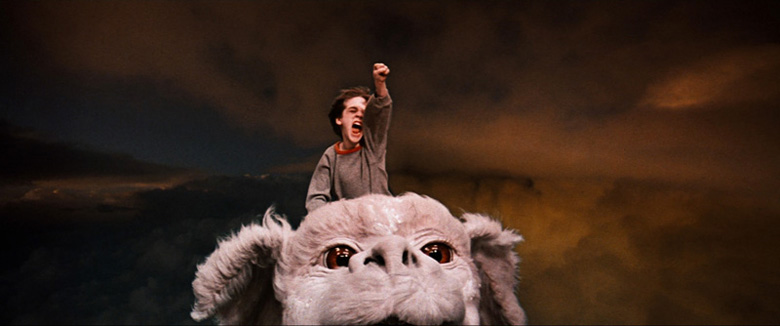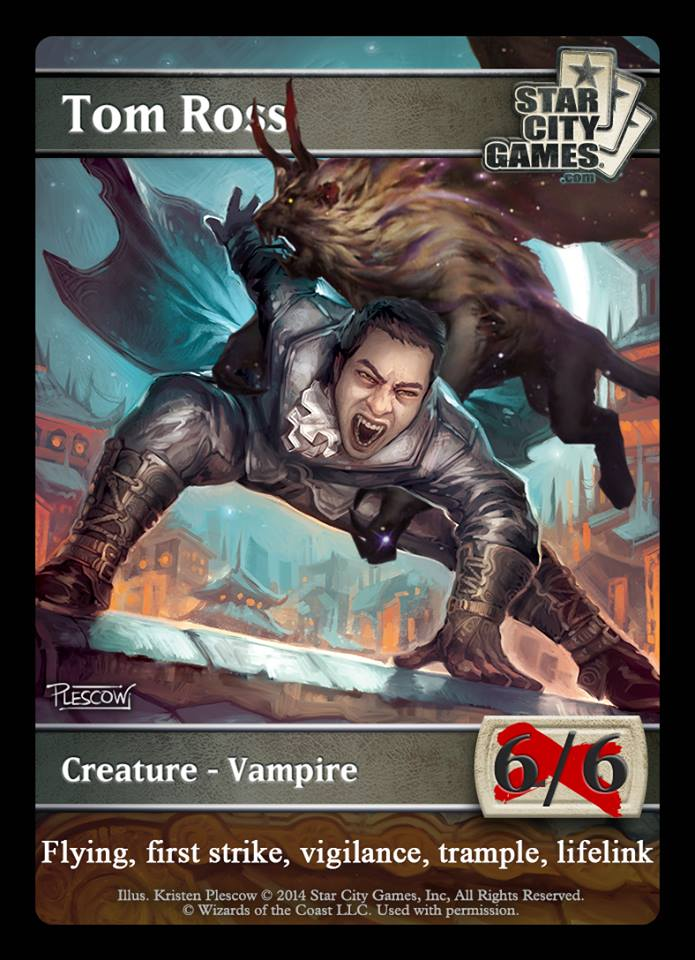Standard is in a weird place right now. Midrange is ruling the game, and the variations are so strong and diverse that it’s tough to build a deck that goes
way underneath them or way over them. There is little room for dedicated aggro like Mono-Red to flourish when naturally efficient cards like Siege Rhino,
Courser of Kruphix, and Sorin, Solemn Visitor are everywhere. Pure control doesn’t nearly have the tools it once did with Jace, Architect of Thought and
Sphinx’s Revelation, and it seems like only control-playing masters have been capable of winning matches with U/B, Esper, or U/W Control in current
Standard.
It seems that the answer to the format is simply to play a midrange deck that can go bigger and better than the opposition. More copies of Duneblast are
showing up in Abzan Midrange, and I wouldn’t be surprised to see green-based devotion make a comeback as well. As long as people aren’t playing Mono-Red,
there’s nothing to worry about. Even so, people have been packing the necessary number of Drown in Sorrows and/or Anger of the Gods to have reasonable game
against it. As long as I keep seeing the hate cards in sideboards, I’ll keep Boss Sligh shelved, but be sure that I’ll pick it back up if it’s not given
the due respect.
Of all the Khans wedges, Sultai is regarded as the king of the three-color midrange strategies. With the ability to go longer with Whip of Erebos, Pharika,
God of Affliction, and Soul of Innistrad, you rest assured that with every passing turn your deck’s inevitability will eventually bury the opponent. Take
John Farrow’s winning Sultai Reanimator deck from the Open Series in Atlanta for example.
Creatures (27)
- 4 Hornet Queen
- 2 Elvish Mystic
- 4 Sylvan Caryatid
- 4 Courser of Kruphix
- 4 Satyr Wayfinder
- 3 Doomwake Giant
- 1 Pharika, God of Affliction
- 1 Soul of Innistrad
- 4 Sidisi, Brood Tyrant
Lands (23)
Spells (10)
Sideboard

In a world of Mardu Midrange, Abzan Midrange, and whatever else midrange, it’s easy to see why John’s deck full of heavy hitters came out on top. It’s the
preferred deck of many of the top pros at the Magic World Championship this week, and as expected, their format is full of midrange decks capable of at
least doing “decently.” In a metagame that small and with multiple formats, it’s even tougher to pull the trigger on something that could be viewed as high
variance like W/U Heroic or Mono-Red. For me, this is the perfect time to jam aggro down the throats of players playing safe decks.
As far as playing control to go over the top of your opponents, there is one combination still yet unexplored. Control really needs a good sweeper to fill
the void that Supreme Verdict had and End Hostilities is a touch slow in many matchups. Drown in Sorrow is reasonable but doesn’t hit as many creatures as
one would like, and Bile Blight isn’t nearly hitting as many double creatures as it used to. U/R Control with Anger of the Gods may be the control deck
that the format is looking for.
Creatures (4)
Planeswalkers (1)
Lands (26)
Spells (29)

This build of U/R Control features a gimmicky but strangely effective combo kill with Pearl Lake Ancient and Master the Way. Since burn is your primary way
of removing creatures, you often end up with a few spare Lightning Strikes and such as the game goes long and an end of turn Pearl Lake Ancient into
untapping and returning six or nine lands will fuel a huge Master the Way. There’s a little concern over a resolved Siege Rhino, but that’s primarily what
Fated Conflagration is for. With your card advantage pointing a Magma Jet and a Lightning Strike at it for the one-for-two, isn’t all that bad of a play.
I really like how Steam Augury pairs with Dig Through Time to fill your graveyard. The pioneer Jeskai Aggro decks used to play both before cutting the
Steam Augury – not because the combo was bad but because it doesn’t really work with what Jeskai wanted to be doing on its turn 4. U/B Control and U/W
Control have to be satisfied playing Divination or Jace’s Ingenuity, and Steam Augury is a better card draw spell than either of those. It nearly feels
like you’re playing eight copies of Dig Though Time in the deck. When you pass with four mana up, your opponent has to respect a counter or burn spell and
often lead with one of their weaker spells into you regardless if you actually have the Dissolve or not. If the spell isn’t too scary, you can let it
resolve and fire off your Steam Augury.
The sideboard is a bit transitional in the sense that you change your gameplan to focus to Haunted Plate Mail. The card is hard to interact with, and you
control the terms which your opponent is allowed to use their creature removal. Haunted Plate Mail combos particularly well with Stubborn Denial to have a
really efficient counterspell on the turns that they’re tapping out for a planeswalker or trying to kill your 4/4. The rest of the sideboard is rather
straightforward, with Magma Sprays as cheaper removal against the smaller creature decks and Keranos and Negate for the slower and more grindy matchups.
However, there is something to be said about just playing all of the strongest cards. Brad Nelson has recently approached the Standard format with the idea
that a four-color manabase isn’t very much different than a traditional three-color one. When you play all best cards and in the format, the power level of
your deck has a way of leading to game wins even if most of the time you’re just casting the most efficient card mana-wise every turn. Heck, even running
Chained to the Rocks isn’t out of the question with all the fetchlands.
Creatures (17)
Planeswalkers (5)
Lands (25)
Spells (13)

What if we took the strategy one step further? If four is the new three then five must be the new four, right? The tri-lands from Khans of Tarkir
work wonders fixing mana, and when you also have access to painlands, fetchlands, ten Temples and Mana Confluence, it’s not a question of if five-color is
possible – it’s a question of how to build it. The last real five-color iteration that was successful in Standard was of the control variety that played
Cryptic Command, Cloudthresher, and Cruel Ultimatum in the same deck. Midrange is all the rage at the moment, and I think that a sweet midrange deck that
takes the best cards from the full buffet available in five-color could be where Standard is moving. Introducing five-color midrange…or as I like to call
it: U/G Crackling Doom.
And oh yeah… Chromanticore!
Creatures (26)
- 4 Sylvan Caryatid
- 4 Fleecemane Lion
- 4 Chromanticore
- 4 Courser of Kruphix
- 4 Rattleclaw Mystic
- 2 Sagu Mauler
- 4 Siege Rhino
Planeswalkers (2)
Lands (24)
Spells (8)

Yeah Chromanticore… and it is insane. It’s the most over-the-top of all over-the-top cards and bestowing it is as awesome as it sounds. The
references to Baneslayer Angel are real and indeed bestowing it on a creature that dies (the plan is to not give your opponent that option) leaves a
Baneslayer Angel after they’ve dealt with your bestowed creature with something rude like a Hero’s Downfall or Elspeth. Chromanticore wasn’t good when it
was printed in the previous Standard where Mono-Black Devotion was supreme, but now that midrange is rampant, it’s the time to dust off copies of this
forgotten mythic from Born of the Gods.
Chromanticore is a like a pair of shoes that goes great with anything. This is what it feels like to cast one.

It dies to Stoke the Flames and other removal, but whatever. They likely have to spend their first Stoke on Courser of Kruphix. Chromanticore matches up
well against Wingmate Roc and brick-walls an entire offense by itself. The bestow aspect give Chromanticore pseudo-haste, and the rest of its abilities
complement each other nicely. Vigilance is one of the big things missing from Baneslayer Angel, and now you don’t have to worry about dying to a crackback
when you start attacking. Trample comes into play against everything from Vampire tokens to Mantis Rider. Even Stormbreath Dragon doesn’t halt your offense
when you bestow it on a creature, even if it’s on a white one like Fleecemane Lion.
While it’s good to cast for five mana as soon as turn 4 and goes well on basically any creature whether it’s a Rattleclaw Mystic or Courser of Kruphix, the
full blown unbeatable combo is bestowing it on a hexproof creature (probably not Sylvan Caryatid). Fleecemane Lion is already a decent creature in an Abzan
deck and plays well in here as well, especially once it goes monstrous to assemble a sweet target for Chromanticore’s bestow. Sagu Mauler makes an
appearance as well to have a 10/10 monster that’s better than even Progenitus. The fact that Rattleclaw Mystic also morphs helps create a mini-guessing
game the times that you need to play Sagu Mauler earlier for three mana.
The mana is far from perfect, and the repetitions simply need to be put in to discover the right distribution of both colors and lands that enter the
battlefield tapped. I originally played with 4 Mana Confluence and 12 Khans tri-lands but the mana felt “too good”. There’s very little need for blue mana,
and the times that you get up to Chromanticore mana you tend to have a Sylvan Caryatid or Rattleclaw Mystic out helping power it. There ought to be some
blue spells in the sideboard so I don’t want to dip too low on the blue land count. The sideboard could literally be anything as you have full access to
every card Standard has to offer. As a start, it’s similar to Brad Nelson’s with some Negates and Magma Spray over Anger of the Gods, as you have too many
mana accelerants and Fleecemane Lion that die to it.
While I’m not always the biggest fan of attacking a format by going bigger, now is definitely the right time in the current Standard environment.
Eventually there will be a bubble that will burst and hyper aggression will come along to reset the balance. We’re still a few steps from that happening,
and for now, the logical step to fight the metagame is to trump the cards and decks you expect to face one step at a time. If you can’t beat them, join
them. Just make sure you do it better.
Who needs Falkor when you have Chromanticore on your side?



